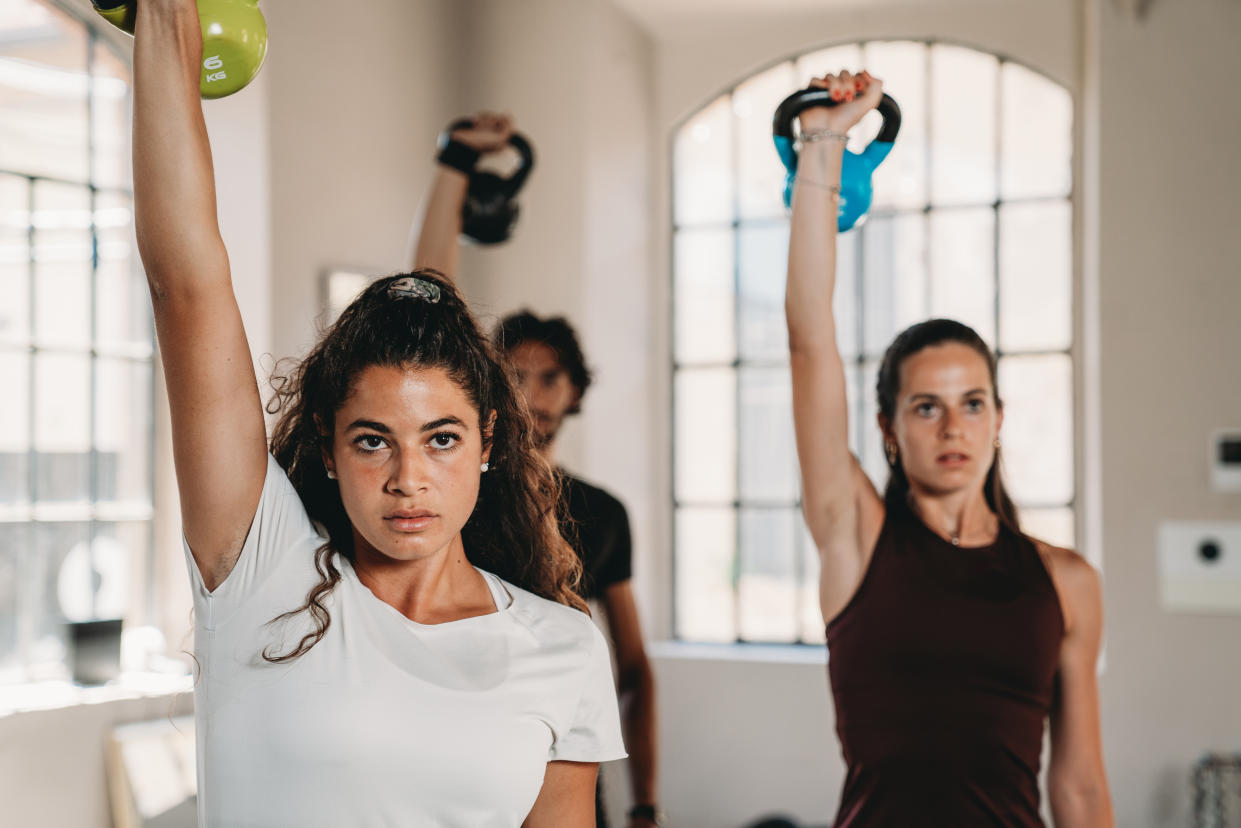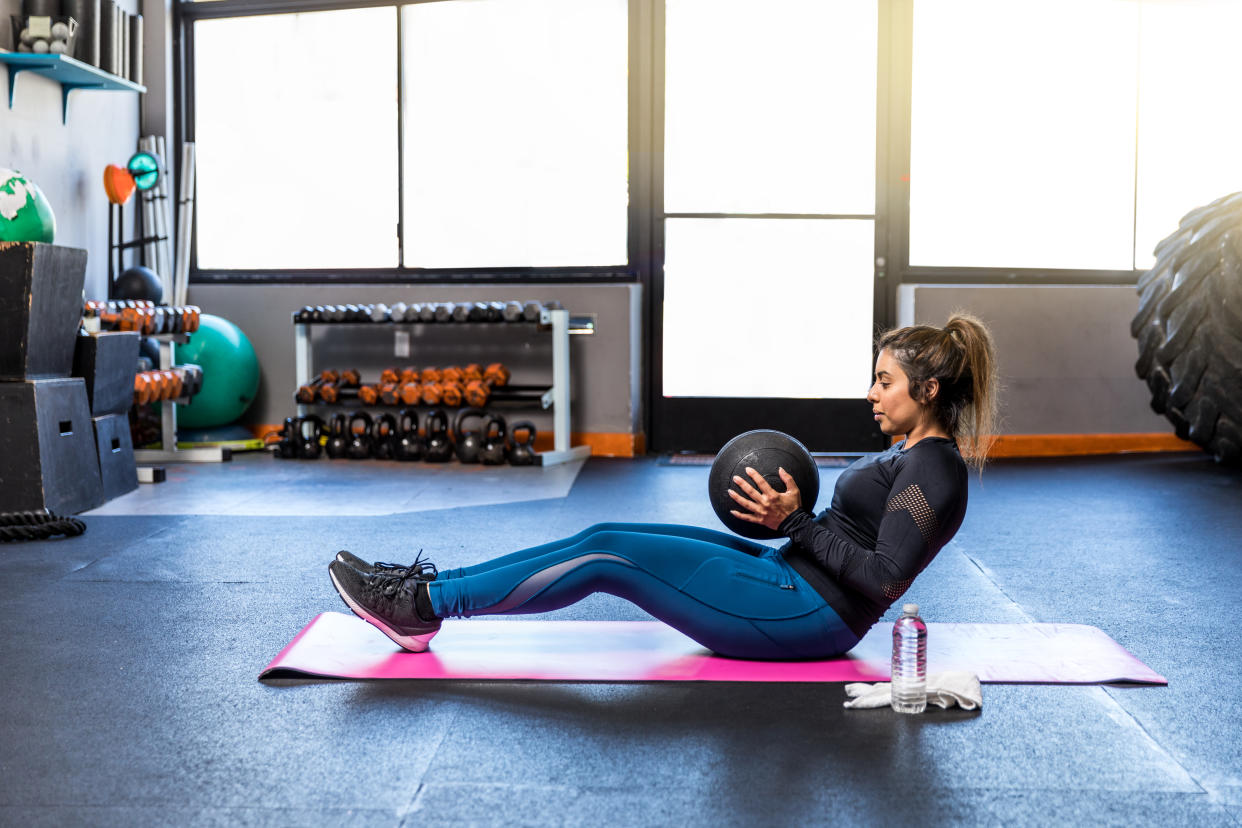Should you take up HIIT? The pros and cons of high intensity interval training

An increasing number of fitness fanatics are swearing by the HIIT (high intensity interval training) workout, with many praising it for helping them achieve weight and strength goals.
The intense exercise regime, which usually lasts between 30 to 45 minutes, is physically demanding and designed to push people to their maximum capacity in a short amount of time.
Workouts usually consist of heart rate-raising moves like burpees, mountain climbers, squats, and running. Each exercise is completed for 20 to 40 seconds, with short rests in between before starting the circuit again.
Proponents of HIIT workouts often talk about its benefits when it comes to weight loss and improving stamina, strength and endurance. The short time it takes to complete a HIIT workout is also a major benefit, particularly for busy full-time workers.
However, as with any exercise regime, HIIT isn’t for everyone - and, in some cases, may even be harmful.
Watch: Five tips for a speedy but effective workout
Here’s what personal trainers and fitness experts say about the pros and cons of HIIT.
What is considered a HIIT workout?
The definition of a HIIT workout, according to Harvard’s The Nutrition Source, is an interval training exercise that incorporates several rounds that alternate between several minutes of high intensity movements.
The goal is to significantly increase the heart rate to at least 80% of one’s maximum heart rate, followed by short periods of low intensity movements.
Most HIIT workouts, whether conducted in in-person classes or online, follow a circuit. People perform an exercise like squat jumps or burpees for 30 to 45 seconds, followed by a short 10 second rest before moving on to another exercise. This continues for anywhere between 15 to 30 minutes.
But some people contest this format of HIIT. Jack Coxall, personal trainer and co-founder of Fitness Lab, tells Yahoo Uk: “For the most part, HIIT is actually used incorrectly… To truly achieve high intensity, the work period shouldn’t be longer than 15 seconds, really, for maximal output.
“Anything more and you aren’t achieving an intensity high enough. Think about the 100m sprint – that is a true high-intensity activity. If a workout consisted of five sets of 100m sprints with three to four-minute rests between sets, that would be a true HIIT workout.
“Instead, most people are doing HIT workouts,” he continues. “Just the one I for high intensity workout. Where the intensity is high because there is a lot of volume, your heart rate spikes and you work hard for however long you are doing it for.”

Pros of HIIT
Although Coxall’s definition of HIIT might differ, it remains that these types of workouts are hugely popular among a growing number of people. Studies have shown several proven benefits of HIIT workouts.
James Barr, a personal trainer at Fitness First, breaks the benefits down:
1. Efficiency
The time structure of HIIT workouts allows people to “achieve significant results in a shorter amount of time compared to traditional steady-state cardio exercises”, Barr explains.
2. Calorie burn
“HIIT workouts elevate your heart rate and metabolism during both the intense exercise intervals and the recovery periods. This leads to an increased calorie burn not only during the workout but also afterward due to the afterburn effect, also known as excess post-exercise oxygen consumption,” Barr says.
3. Cardiovascular health
By pushing your heart rate to high levels during the intense exercise intervals, HIIT can “improve your heart’s efficiency, increase your aerobic capacity, and enhance overall cardiovascular health”.
“Additionally, HIIT has been shown to improve various markers of cardiovascular health, such as blood pressure, cholesterol levels, and insulin sensitivity, reducing the risk of chronic diseases like heart disease and type 2 diabetes.”

Cons of HIIT
Not everyone can – or should – do HIIT. Because of how intense the exercises are, people with certain conditions or injuries are advised not to try this regime.
Some of the drawbacks of HIIT include:
1. High stress
According to Sarah Aspinall, the founder of BreakingBallet.com, HIIT workouts can be too hard on the body and can cause stress on the joints, muscles and cardiovascular system.
“Additionally, excessive frequency or intensity of HIIT sessions (without adequate recovery time) can result in fatigue, disrupted sleep patterns, and heightened stress levels, negatively impacting overall health and well-being. So, while HIIT can be a valuable component of a fitness regime, it's essential to balance intensity with rest and listen to your body's signals to prevent potential adverse effects.”
2. Injury risk
Antony Chris, personal trainer and director of Complex Training, warns that the risk of injury while working out is heightened with HIIT.
“The high intensity and demanding nature of HIIT workouts increase the risk of injury, making proper form and technique essential to minimise this risk. Additionally, HIIT may not be suitable for everyone, especially beginners or those with certain health conditions, due to its challenging intensity level.”
3. Short-lived progress
HIIT advocates often talk about how quickly they see results when sticking to this workout - but Steve Doidge-Harrison warns that these gains won’t last without doing other forms of exercise.
The personal trainer and co-founder of Bio Skin & Wellness says: “Although you may see results very quickly, if this is the only form of training you do, they will grind to a halt just as quick.”
It can also be harder to stay motivated to continue HIIT and burn-out is common. “Because you are not progressing towards a specific goal – such as getting stronger or improving your 5K time, for example – you will lose motivation to train.”
Watch: Are HIIT workouts actually bad for you like people say on TikTok?
Should I take up HIIT?
Whether or not you should start doing HIIT depends on a number of factors, especially your current health status and whether you have any conditions that might be exacerbated or cause harm when you exercise.
If you have any concerns about it, speak to your doctor about what kinds of exercises would be suitable for you. You should also consult a personal trainer who can help advise you on an exercise routine that can benefit your health safely.
Read more about fitness and exercise:
The nine 'fitness tribes' taking over dating apps (Yahoo Life UK, 7-min read)
Why is everyone obsessed with pilates, and what are the benefits? (Yahoo Life UK, 5-min read)
How to look after your heart health during menopause (Yahoo Life UK, 8-min read)


